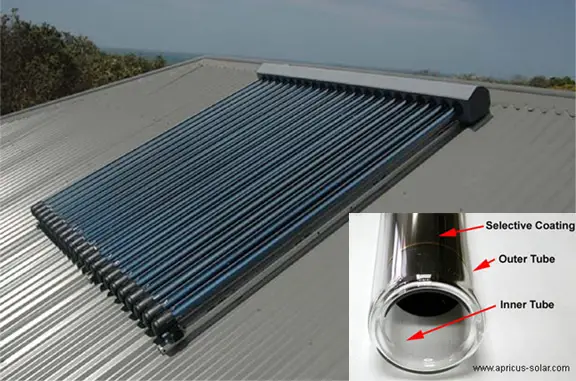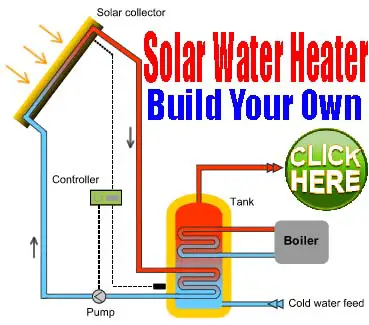Solar hot water refers to water heated by solar energy.
Solar heating systems are generally composed of solar thermal collectors, a fluid system to move the heat from the collector to its point of usage, and a reservoir or tank for heat storage and subsequent use. The systems may be used to heat your domestic hot water, swimming pool water, or for space heating.
In many climates, a solar heating system can provide between 50 percent and 90 percent of your total hot water requirements, depending on the climate and the model of heater. In many northern European countries, combined hot water and space heating systems are used to provide 15 to 25% of home heating energy. The initial cost of a solar water heater is higher than electric or gas water heaters but you will definitely save money over time. Some countries provide a rebate to assist with the purchase and installation, as a solar hot water system has significant greenhouse gas benefits.
In the Southern regions of Africa like Zimbabwe, solar water heaters have been gaining popularity and more than 400,000 homes in Australia have a solar water heater.
Residential solar thermal installations can be subdivided into two kinds of systems: compact and pumped systems. Both typically include an auxiliary energy source (electric heating element or connection to a gas or fuel oil central heating system) that is activated when the water in the tank falls below a minimum temperature setting such as 50 °C. Hence, hot water is always available. The combination of solar hot water heating and using the heat from a wood stove chimney to heat water can enable a hot water system to work year round in northern climates without the supplemental heat requirement of a solar hot water system being met with fossil fuels or electricity.
The solar collectors used by the solar water heater are available in three main types: flat plate collectors, flooded plate collectors, and evacuated tubes. Each type has its advantages and disadvantages, with evacuated tubes being the most efficient in the cooler months and on cloudy days. The most common type is still the flat plate collector, which uses a series of pipes bonded to a flat backing plate to heat the water.
Evacuated Tubes
Each evacuated tube consists of two glass tubes made from extremely strong. The outer tube is transparent allowing light rays to pass through with minimal reflection. The inner tube is coated with a special selective coating which features excellent solar radiation absorption and minimal reflection properties. The top of the two tubes are fused together and the air contained in the space between the two layers of glass is pumped out while exposing the tube to high temperatures. This “evacuation” of the gasses forms a vacuum, which is an important factor in the performance of the evacuated tubes.

Why a vacuum? As you would know if you have used a glass lined thermos flask, a vacuum is an excellent insulator. This is important because once the evacuated tube absorbs the radiation from the sun and converts it to heat; we don’t want to lose it!! The vacuum helps to achieve this. The insulation properties are so good that while the inside of the tube may be 150C (304F), the outer tube is cold to touch. This means that evacuated tube water heaters can perform well even in cold weather when flat plate collectors perform poorly due to heat loss.  Teach Yourself Solar Power
Teach Yourself Solar Power
Finally, an easy-to-follow guide to generating power from the sun, anywhere!
The Solar Power Design Manual Ebook starts from first principles to guide you through the process of designing, specifying and installing your own self-contained solar power system, anywhere in the world.
The Solar Power Design Manual eBook starts from first principles to guide you through the process of designing, specifying and installing your own self-contained solar power system, anywhere in the world.
With the Solar Power Design Manual you will learn:
How solar power works, with simple diagrams
How to make the most of the power available
How to choose the right components
The best way to estimate the available solar energy
How to decide when solar power is not the answer
How to make sure that the system continues to work for years to come


